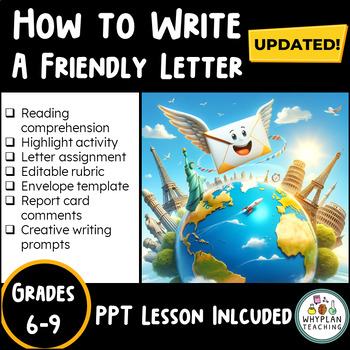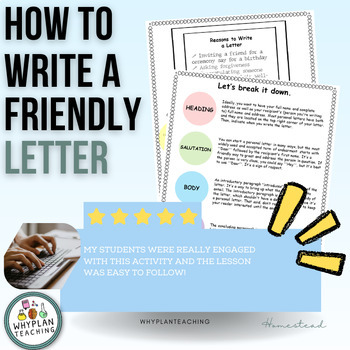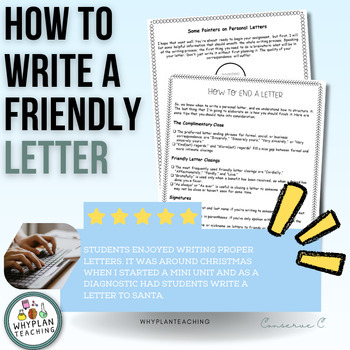Middle School Language | How to Write A Friendly Letter + PPT | Updated
- Zip
What educators are saying
Description
Middle School Language - How to Write A Friendly Letter + PPT-Rubric-Assignment - Welcome to my engaging Friendly Letter Writing resource! This interactive and comprehensive lesson plan is designed to teach your students the valuable art of letter writing, a critical skill in today's digital age. This resource pairs perfectly with the Ontario Language Curriculum but covers expectations across most curriculums.
What's Included in the Resource
This resource has everything you require to guide your students in friendly letter writing. You'll find:
- Readings on crafting friendly letters.
- Student worksheets, which include a highlight activity.
- A final assignment complemented by an editable rubric.
- A PowerPoint presentation containing essential notes for the lesson.
- Engaging videos to introduce and elucidate the topic.
- An envelope template, providing students with the opportunity to apply their newly acquired skills.
- Update (Nov.2023) - Report card comments and creative writing prompts added!
Benefits of the Resource: Engaging, Interactive, and Educative
Your students are sure to love this resource's interactive format. It allows them to hone their writing skills, develop their confidence in expressing themselves on paper, and understand the structure and format of a friendly letter. As a teacher, you will appreciate witnessing their progress as they grasp the art of letter writing. This resource can supplement your current curriculum or serve as a standalone lesson, ensuring its adaptability to your teaching needs.
Importance of Letter Writing in the Digital Age
In our technology-driven world, letter writing remains a vital mode of communication. Its mastery helps students to strengthen their writing skills and confidence, which are invaluable assets in their academic and personal lives.
Building Connections and Fostering Community
Aside from the practical skills your students will gain, this resource encourages a sense of connection and community. Letter writing and sending fosters personal communication, bringing joy to both the sender and recipient and teaching the importance of personal connections.
Are you interested in other resources from the "How to" line?
How to Write A Formal E-mail, Middle School, Intermediate Writing
How to debate - Middle school debating - Lesson + Assignment
How to write a resume - Middle school - High school
Enjoy,
Blog ✎ Facebook ✎ Instagram ✎ Pinterest
If you're having problems printing them (sizing and all) - Here's a link to a troubleshooter on TPT.





